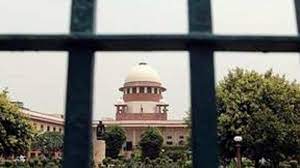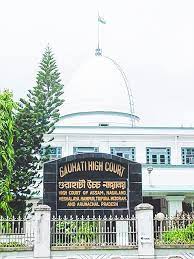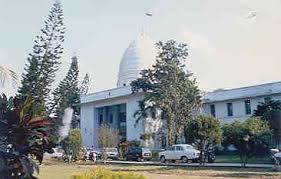Whether the bar of admissibility created by Section 35 of the Indian Stamp Act 1899[Hereinafter referred to as ‘Stamp Act’] applies to the agreement(s) to sell dated 04.02.1988 executed by the parties? (Para 1.1)
Can a copy of a document be adduced as secondary evidence when the original instrument is not in possession of the party? (Para 1.2)
Plaintiff and Defendant entered into an agreement to sell on 04.02.1998, and pursuant to that, Plaintiff was allegedly put in possession by Defendant. When Defendant denied the existence of such an agreement, Plaintiff filed a suit for specific performance of contract. In the said suit, Plaintiff moved an application to file a copy of the agreement to sell, among other documents, as secondary evidence. (Para 2)
Initially, the said application was allowed by the 4th Additional District Judge vide order dated 17.07.2001. But when Defendant sought review of this order, the Court vide its order dated 16.12.2003 reviewed it and held that secondary evidence of an agreement to sell could not be allowed as it was not executed on a proper stamp, thus barred under section 35 of the Stamp Act. While holding so, it relied on the decision of this Court in Jupadi Kesava Rao (supra). (Para 3)
Subsequently, the Plaintiff filed a writ petition before the High Court of Madhya Pradesh challenging the review order and the constitutional validity of Section 35 of the Stamp Act. The High Court, vide the impugned order dated 30.11.2009 in W.P. No. 741/2004, upheld the validity of the said section and the order of the Review Court. (Para 4)
Learned Senior Counsel Dr. Menaka Guruswamy, for the Appellant-Plaintiff, submits that the prohibition of Section 35 of the Stamp Act is not applicable as there was no requirement for either party to have paid stamp duty at the time of execution (before the 1989 Amendment) of the agreement to sell. Thus, the Plaintiff ought to have been permitted to lead a copy of the agreement to sell as secondary evidence under Section 65 of the Evidence Act. (Para 6)
Respondent no.2/Defendant, in its counter affidavit, has stated that a copy of an original document that is unstamped or deficiently stamped can neither be impounded nor validated or admitted as secondary evidence. Once the original document is inadmissible under the Stamp Act, the photocopy or any other copy cannot be allowed as secondary evidence. (Para 7)
It is evident from a bare perusal of the section that it prohibits admission in evidence of instruments that are chargeable with duty unless they are “duly stamped.” Duly stamped as defined under Section 2(11) of the Stamp Act means that the instrument bears a stamp and that such stamp has been affixed or used in accordance with law for the time being in force in India. (Para 9)
It be observed that now, in many states, amendments were brought in whereby agreements of sale acknowledging delivery of possession are charged with the same duty as leviable on conveyance. (Para 20)
Now the question arises if we can retrospectively read the Explanation added vide M.P. Act 22 of 1990 so as to apply to an agreement to sell executed on 04.02.1988. (Para 21)
A Constitution Bench of this Court in CIT v. Vatika Township (P) Ltd. [(2015) 1 SCC 1] reiterated this principle that the amendments that create rights and obligations are generally prospective in nature. It is a well-established principle of law that clarification or Explanation must not have the effect of imposing an unanticipated duty or depriving a party of an anticipated benefit. (Para 25)
Hence, in our considered view, the Explanation inserted in Article 23 of Schedule I-A contained in the Act creates a new obligation for the party and, therefore, cannot be given retrospective application. Thus, it will not affect the agreement(s) executed prior to such amendments. (Para 26)
If the documents sought to be admitted are not chargeable with duty, Section 35 has no application. Thus, in the present case, since the document was dated 04.02.1988, the instrument was not chargeable with duty. It follows therefrom that when such document(s) are not required to be stamped, then no bar could be imposed due to it being not duly stamped. (Para 28)
We may now consider Section 35 of the Stamp Act which forbids the letting of secondary evidence in proof of its contents. The section excludes both the original instrument and secondary evidence of its contents if it needs to be stamped or sufficiently stamped. This bar as to the admissibility of documents is absolute. Where a document cannot be received in evidence on the ground that it is not duly stamped, the secondary evidence thereof is equally inadmissible in evidence. (Para 36)
Thus, if a document that is required to be stamped is not sufficiently stamped, then the position of law is well settled that a copy of such document as secondary evidence cannot be adduced. The present facts, however, differ. (Para 39)
It is a settled position of law that where the question is whether the document is liable to stamp duty and penalty, it has to be decided at the threshold even before marking a document. In the present case, in view of the discussions above, the document in question was not liable to stamp duty. (Para 41)
The first issue is answered negatively as the documents in question were not required to be stamped at the relevant period to attract the bar of Section 35 of the Stamp Act. (Para 43.1)
The second issue is answered in the affirmative. A copy of a document can be adduced as secondary evidence if other legal requirements are met. (Para 43.2)
SUPREME COURT OF INDIA
2023 STPL(Web) 451 SC
[2023 INSC 1030]
Vijay Vs. Union Of India & Ors.
Civil Appeal No. 4910 of 2023-Decided on 29-11-2023
https://stpllaw.in/wp-content/uploads/2023/12/2023-STPLWeb-451-SC.pdf







